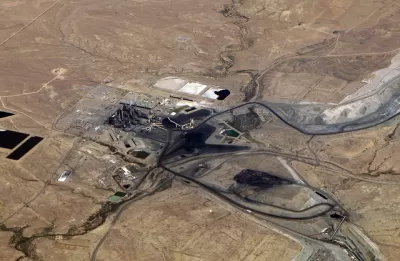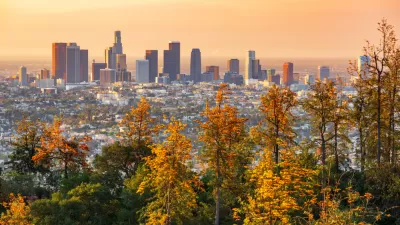The energy sector produced ten percent less carbon emissions in 2019 than the previous year—the largest drop in decades. Still, the decline of the coal industry is not enough to meet the goals of the Paris Climate Accord.

"Greenhouse gas emissions in the United States dropped last year after a sharp increase in 2018," reports Nicholas Kusnetz. The news arrives via data released by Rhodium Group. After an increase in emissions in 2018, 2019's emissions reductions resume a "long-term downward trend driven chiefly by a shift away from coal power generation," according to Kusnetz.
"The story of the emissions decline has largely been one of market forces—rather than policies—that have made utilities close coal plants in favor of cheaper natural gas and renewable energy," adds Kusnetz. The story is all about coal, according to the article.
A key caveat included in the article is that the 2 percent reduction is not enough to meet the targets of the Paris Climate Accord.
FULL STORY: U.S. Emissions Dropped in 2019: Here's Why in 6 Charts

Alabama: Trump Terminates Settlements for Black Communities Harmed By Raw Sewage
Trump deemed the landmark civil rights agreement “illegal DEI and environmental justice policy.”

Planetizen Federal Action Tracker
A weekly monitor of how Trump’s orders and actions are impacting planners and planning in America.

The 120 Year Old Tiny Home Villages That Sheltered San Francisco’s Earthquake Refugees
More than a century ago, San Francisco mobilized to house thousands of residents displaced by the 1906 earthquake. Could their strategy offer a model for the present?

Opinion: California’s SB 79 Would Improve Housing Affordability and Transit Access
A proposed bill would legalize transit-oriented development statewide.

Record Temperatures Prompt Push for Environmental Justice Bills
Nevada legislators are proposing laws that would mandate heat mitigation measures to protect residents from the impacts of extreme heat.

Downtown Pittsburgh Set to Gain 1,300 New Housing Units
Pittsburgh’s office buildings, many of which date back to the early 20th century, are prime candidates for conversion to housing.
Urban Design for Planners 1: Software Tools
This six-course series explores essential urban design concepts using open source software and equips planners with the tools they need to participate fully in the urban design process.
Planning for Universal Design
Learn the tools for implementing Universal Design in planning regulations.
Clanton & Associates, Inc.
Jessamine County Fiscal Court
Institute for Housing and Urban Development Studies (IHS)
City of Grandview
Harvard GSD Executive Education
Toledo-Lucas County Plan Commissions
Salt Lake City
NYU Wagner Graduate School of Public Service




























